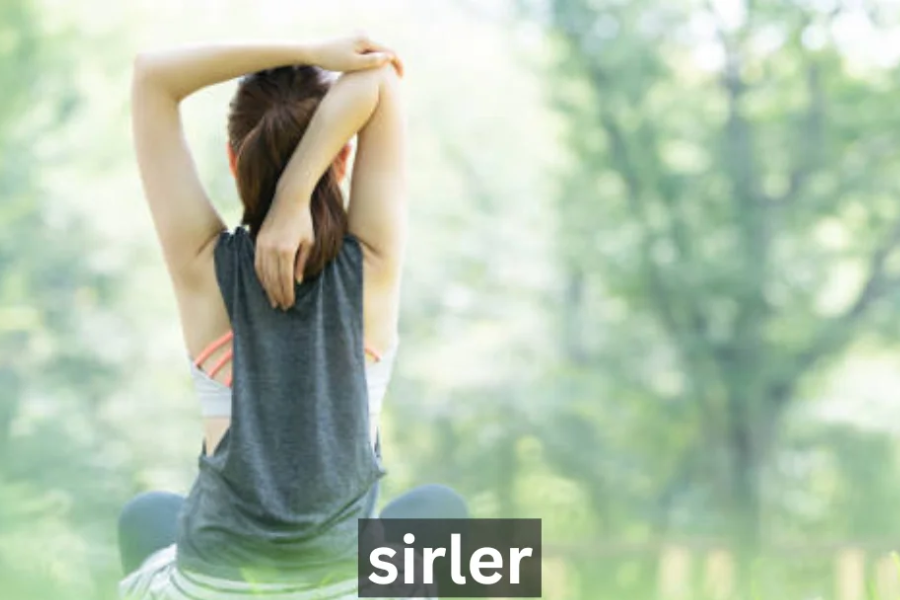In a world that constantly demands our attention, it’s easy to overlook the importance of taking a step back to reflect. Yet, it is in these moments of quiet introspection that true personal growth happens. Reflection allows us to better understand ourselves, learn from our past experiences, and make decisions that align with our values and aspirations. One method of reflection that is gaining popularity for its depth and effectiveness is called Sirler. This method combines traditional introspective practices with modern, innovative techniques to help individuals achieve greater self-awareness and personal development. In this guide, we will explore how Sirler can transform your approach to reflection and how it can be integrated into your daily routine to boost self-awareness and achieve your goals.
What is Sirler? An Overview of Its Definition and Origins
At its core, Sirler is a modern reflection method that fuses mindfulness, psychology, and introspection into one dynamic practice. Rooted in the concept of holistic self-awareness, Sirler isn’t just about quieting the mind or writing in a journal—it’s about engaging both the mind and body through various interactive techniques. Developed through the blending of psychological theory and mindfulness practices, Sirler provides a structured framework that encourages a multi-faceted approach to reflection. By incorporating exercises like guided visualization, mindful movement, and even creative expression, Sirler encourages individuals to engage all their senses during reflective practices.
How Sirler Stands Apart from Traditional Reflection Techniques
Traditional reflection methods typically rely on either mental or written practices. For example, journaling involves writing down thoughts, feelings, and experiences, while meditation focuses on observing the workings of the mind in a detached manner. These methods, though effective to a degree, can sometimes fail to address the complexity of human emotions and behavior. Sirler, in contrast, takes a more comprehensive approach. It encourages participants to combine the introspective benefits of journaling and meditation with practices such as guided imagery, physical movement (like yoga or stretching), and creative expression through art or music.
By combining these diverse techniques, Sirler promotes a deeper, more holistic form of self-reflection. It isn’t just about thinking through your feelings—it’s about feeling them, moving through them, and then analyzing them in ways that enhance personal growth. This innovative practice engages both the body and the mind, making reflection a more immersive and transformative experience.
Real-Life Applications: How Sirler Facilitates Personal Growth
To understand how Sirler works in practice, imagine a typical morning reflection routine. You begin by engaging in a guided visualization that helps you set intentions for the day ahead. You then take a few moments to journal about your thoughts and emotions. Following this, you may engage in a physical practice such as yoga, tai chi, or even stretching. This combination of mental and physical exercises helps to clear your mind, reduce stress, and set the tone for a productive day.
Many individuals who have incorporated Sirler into their daily lives have reported significant improvements in their emotional intelligence, decision-making capabilities, and overall sense of purpose. The multi-pronged approach to self-awareness helps uncover deeper insights about one’s goals, strengths, and challenges, which in turn leads to more intentional, aligned actions.
Why Reflection Matters: The Role It Plays in Personal Growth
Reflection is an essential component of personal development. It allows us to pause, take stock of our experiences, and consider how we’ve grown. Regular reflection helps individuals identify patterns in their behavior, recognize their strengths, and address areas that need improvement. More importantly, it helps us remain connected to our core values and long-term goals, ensuring that our actions align with our aspirations.
Reflection also encourages a greater understanding of our emotions, leading to better self-regulation and emotional intelligence. In turn, this can reduce stress and enhance our ability to make thoughtful, informed decisions.
The Mental Health Benefits of Regular Reflection
In addition to promoting personal growth, regular reflection has profound benefits for mental health. One of the primary benefits of reflection is its ability to reduce stress. By taking time to pause and evaluate your thoughts and feelings, you gain a greater sense of control over them, which can lead to a decrease in anxiety and mental strain. Reflection also fosters emotional intelligence, enabling individuals to better understand and manage their emotions.
Moreover, by cultivating a habit of self-reflection, individuals can improve their mental well-being by fostering a sense of gratitude, increasing self-compassion, and nurturing a more positive outlook on life. These benefits translate into healthier relationships, improved communication, and a more balanced life.
Learning from the Masters: How Famous Leaders Use Reflection
Many renowned leaders and thinkers attribute their success to regular reflection. Mahatma Gandhi, for example, practiced daily reflection as a way of staying connected with his personal values and guiding principles. Steve Jobs, too, famously took long walks during which he would reflect on his decisions and creative ideas, finding inspiration and clarity through moments of solitude.
These examples demonstrate how reflection can act as a tool for personal growth, focus, and decision-making. It allows individuals to recalibrate, assess their progress, and align their actions with their overarching vision. Incorporating regular moments of reflection into your routine can help you make more informed decisions and stay on track toward achieving your personal and professional goals.
Practical Ways to Integrate Sirler into Your Daily Life
To begin experiencing the benefits of Sirler, it’s important to integrate it into your daily routine. The first step is to carve out dedicated time for reflection, whether it’s in the morning, during lunch, or before bedtime. By making reflection a priority, you signal to yourself that it’s an important part of your day. The next step is to engage in the different Sirler practices that resonate most with you, such as guided visualization, mindful movement, or journaling.
Creating a peaceful environment is key to enhancing your reflective practice. Choose a quiet, comfortable space free from distractions. You can further enhance your reflection by using tools such as guided meditation apps, mindfulness techniques, or creative outlets like drawing or writing.
Tools and Resources to Enhance Your Reflection
Several tools and resources can support your reflective journey with Sirler. Guided visualization apps can provide structure and focus for your sessions. Mindfulness apps, such as Headspace or Calm, can help you remain present during your reflections. You might also find that artistic expression—through sketching, painting, or writing—can bring out deeper emotions and insights that are often hard to express in words alone.
By combining these tools, you can create a customized reflection routine that works best for you, one that incorporates both traditional and modern techniques to maximize self-awareness and growth.
Personal Stories: How Sirler Transformed Lives
Consider Sarah, a busy executive who had been struggling with stress and burnout. After incorporating Sirler practices into her daily routine, she began to gain a better understanding of her stressors and emotional triggers. Through consistent reflection, Sarah learned to manage her emotions and adopt strategies to reduce anxiety. Similarly, John, a college student, used Sirler to reflect on his academic habits, ultimately improving his focus and performance.
These personal stories illustrate how Sirler can lead to transformative changes by helping individuals gain a clearer understanding of themselves and their behaviors. By reflecting regularly, Sarah and John were able to set actionable goals, improve their emotional intelligence, and develop strategies for overcoming their challenges.
Overcoming Obstacles in Maintaining a Reflective Practice
Maintaining a consistent reflective practice can be difficult, especially when life gets busy. Some common obstacles include lack of time, distractions, or difficulty staying motivated. Recognizing these challenges is the first step in overcoming them. For example, setting specific goals for your reflection practice can help you stay focused and motivated. Additionally, scheduling time for reflection can ensure that it becomes a non-negotiable part of your routine.
Strategies to Stay Committed to Your Reflection Practice
To stay committed to your reflection practice, it’s important to create a supportive environment. Start by selecting a time and space that works best for you. Whether it’s in the morning before the day starts or at night before bed, consistency is key. You can also stay motivated by tracking your progress and celebrating milestones along the way. Over time, the practice of reflection will become ingrained in your routine, and the benefits will become evident.
The Role of Sirler in Work and Community Settings
Sirler isn’t just for personal reflection—it can also be a valuable tool in team building and professional development. By incorporating Sirler into team meetings or professional growth programs, organizations can foster a culture of self-awareness and continuous improvement. For example, employees can use Sirler practices to reflect on their strengths and weaknesses, set personal development goals, and provide constructive feedback to colleagues.
Some companies have already successfully integrated Sirler into their organizational culture. A tech startup used Sirler practices to enhance communication and collaboration among team members. By taking the time to reflect together, they developed stronger working relationships and improved their ability to collaborate on projects.
Introducing Sirler to New Teams or Communities
When introducing Sirler to new groups or communities, it’s important to explain the benefits of reflection and the specific practices involved. Provide examples of how Sirler can improve self-awareness, personal growth, and team dynamics. Encourage others to give it a try and offer guidance as they begin incorporating these practices into their routines.
Conclusion: Start Your Journey to Self-Awareness with Sirler
In conclusion, reflection is an incredibly powerful tool for personal growth, mental well-being, and goal achievement. By incorporating Sirler into your daily routine, you can enhance your self-awareness, improve your decision-making skills, and unlock your full potential. Whether you’re looking to improve your emotional intelligence, increase productivity, or deepen your sense of purpose, Sirler offers a holistic approach to reflection that can truly transform your life. Start practicing Sirler today, and take the first step toward achieving your goals and becoming the best version of yourself.
Explore in-depth articles on fashion, beauty, and lifestyle at Mainguestpost.com.













Leave a Reply